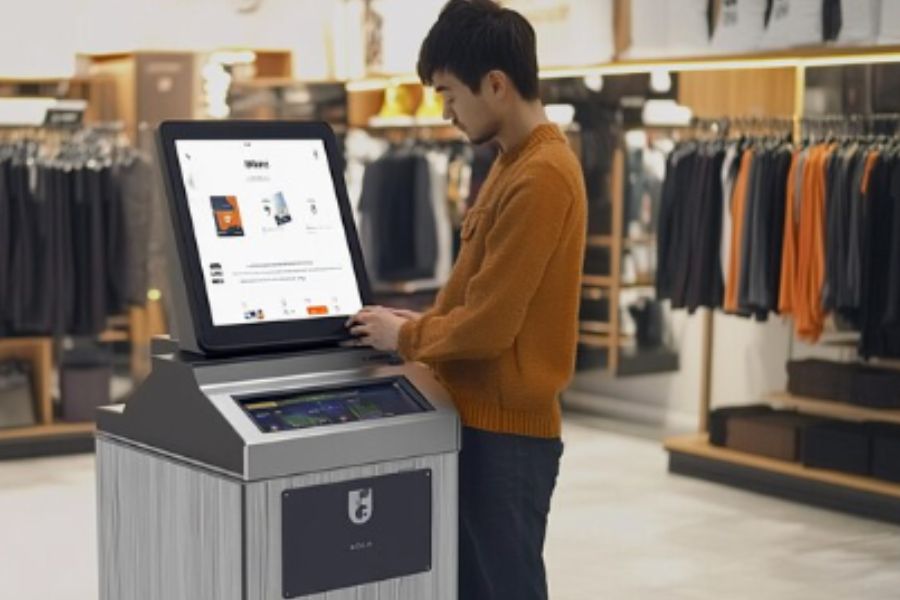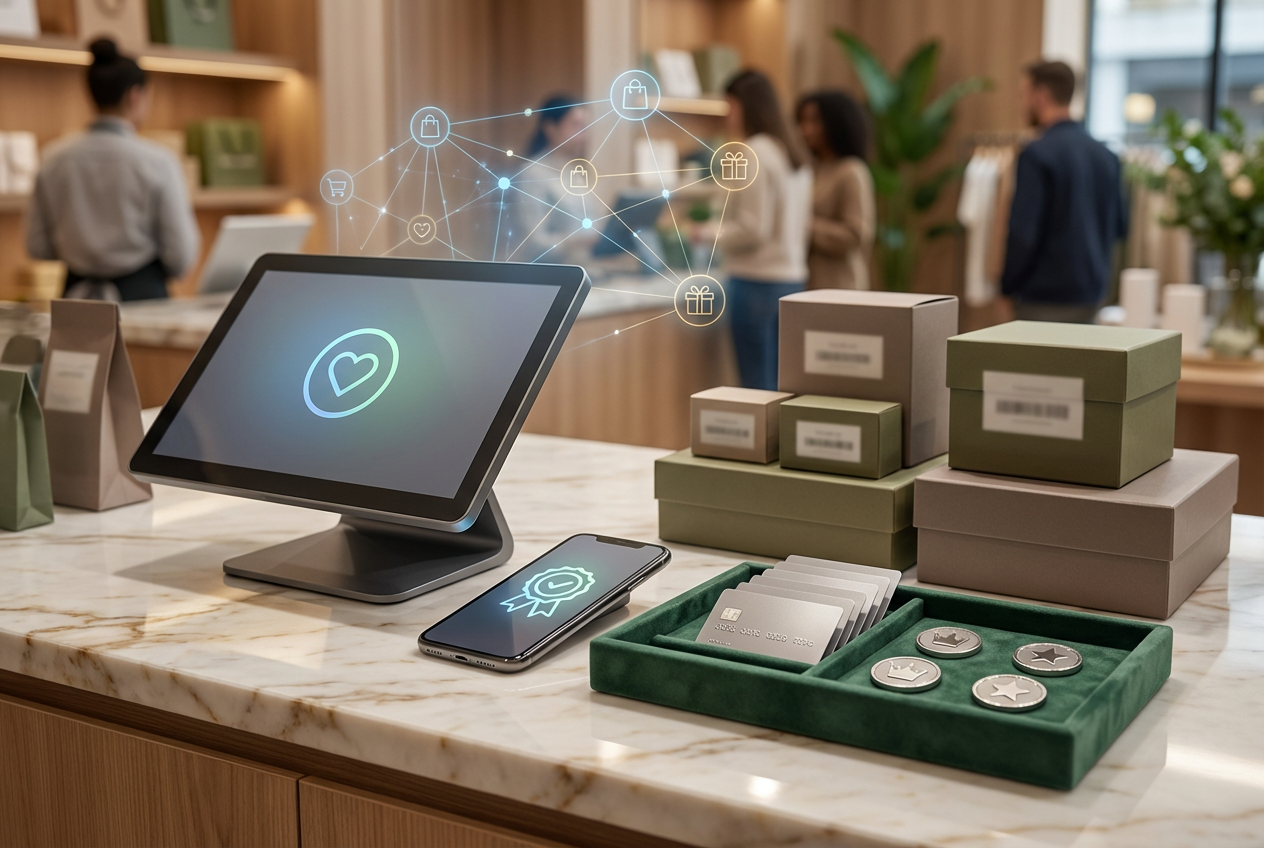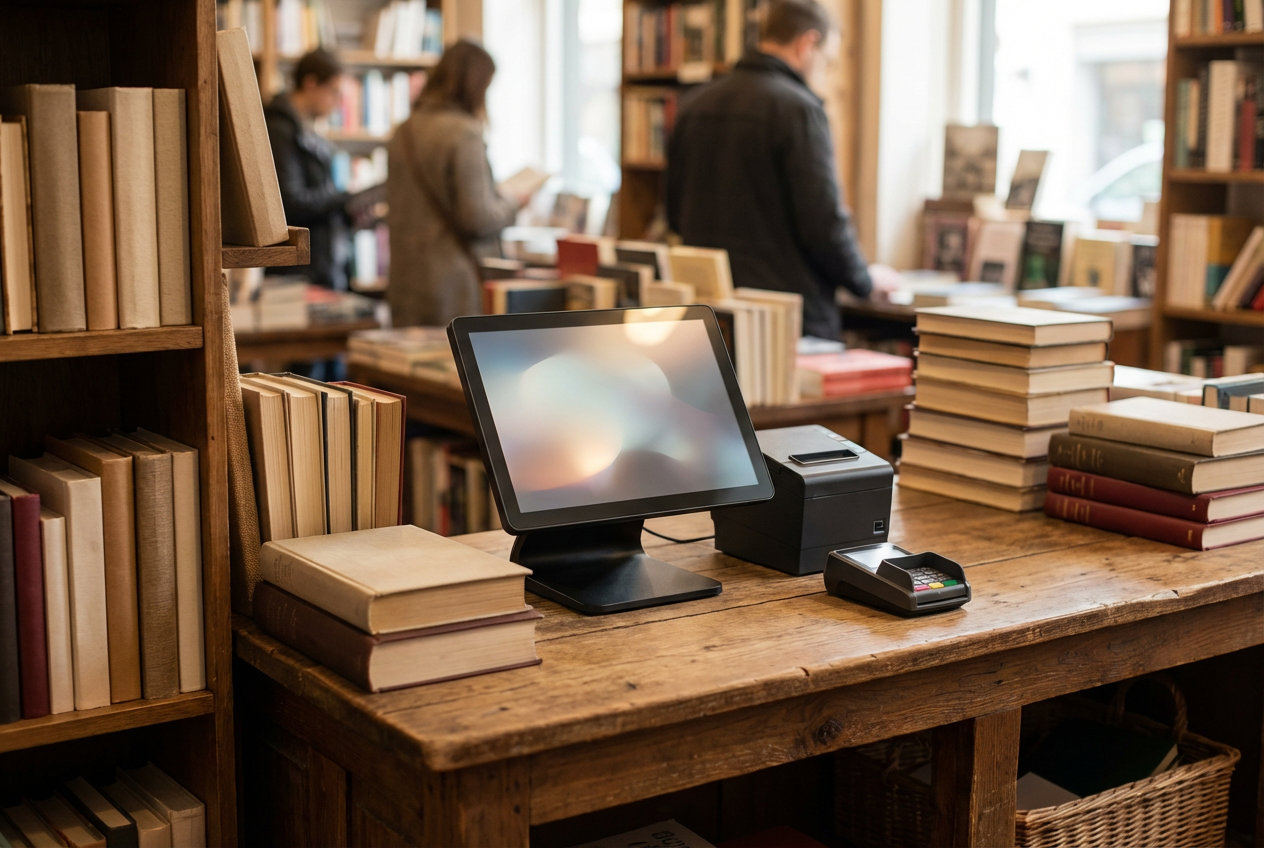One store already keeps you busy. But managing multiple locations? That’s another level entirely. You’re not just handling more inventory and customers; you’re also juggling staff, schedules, and sales reports across sites. A well-built Shopify POS solution for multiple stores setup keeps your shops synced, your team connected, and operations clear, so you stay in control, no matter how many outlets you add.
Highlights:
- Businesses managing multiple stores need a specialized Shopify POS solution to centralize operations, avoid data errors, and maintain consistency across locations.
- The right Shopify POS should support real-time inventory syncing, multi-location management, staff permissions, and unified reporting.
Why Retailers Need Shopify POS for Multiple Store Management
Opening new locations sounds great until you’re buried in spreadsheets, chasing inventory, and untangling sales reports. Juggling inventory across multiple stores quickly becomes tricky. McKinsey reports that overstocks and stock‑outs cost the global retail industry roughly $1.1 trillion in lost revenue each year, and industry data shows that out‑of‑stocks led CPG companies to forfeit nearly $3 billion in sales during the COVID‑19 pandemic. Sell out in one place while another store is overstocked, and you’ve got disappointed customers and wasted stock.
Staff management isn’t much easier. More locations mean more employees, each with their own schedules and roles. Without clear permissions, mistakes happen. Prices change without approval, discounts are applied incorrectly, and security risks escalate.
Then there’s customer data. Around 70 percent of consumers will switch retailers after encountering stockouts, eroding loyalty and driving customers away. Shoppers expect consistency, whether they’re buying online, visiting Store A, or checking stock at Store B. Without unified data, loyalty programs break down, and customers feel forgotten rather than valued.
A robust Shopify POS, designed for multiple stores, tackles all these challenges. Inventory stays accurate because every sale, return, and transfer updates instantly across your stores. Employees have defined roles, cutting down mistakes. Unified dashboards give you clear insights, letting you manage all locations from a single view. With this foundation, you scale smoothly, rather than spiraling into chaos.
Key Features to Look for in a Shopify POS for Multiple Stores
Below, we’ll break down the key features that make the best Shopify POS for multiple stores stand out.
Real-time inventory sync across all locations
You can’t afford to guess how much stock you have or where it is. Real-time inventory syncing means every sale updates instantly, so all your stores know exactly what’s in stock at every location. It keeps your shelves full and customers happy, while reducing overstocking and shortages.
Role-based staff permissions and mobile access
Mistakes at the register cost you money. Role-based permissions mean employees only do what they’re authorized for, like processing returns or applying discounts. Mobile access lets managers and staff handle sales, inventory checks, or approvals right from a phone or tablet, keeping everything moving fast.
►►► Optimal solution set for businesses: Multi store POS, Next-gen POS, Inventory Management Software (MSI), Self Service, Automation, Backorders
Multi-location sales analytics
Knowing what’s selling and what’s sitting unsold helps you make better decisions. Strong analytics show you how each store performs individually and combined, helping you spot trends. You can easily see what’s popular in certain locations and adjust stock and promotions accordingly.
Omnichannel fulfillment: in-store pickup, local delivery, ship-to-customer
Customers love convenience, and flexibility boosts sales. A Shopify POS built for multiple stores supports options like order fulfillment through in-store pickup, local delivery, and direct shipping to customers. That means shoppers get their orders faster, from the store closest to them, without extra hassle for your team.
Unified customer data and loyalty tracking
Great retail experiences come from understanding your customers. Unified customer data across all locations means loyalty programs, purchase history, and customer preferences travel seamlessly between online and offline stores. Shoppers feel valued wherever they shop, driving repeat visits and higher sales.
Offline mode and compatibility with preferred hardware
Internet outages shouldn’t stop your sales. Offline capabilities let your Shopify POS keep processing transactions, syncing once you’re back online. Plus, choosing a POS compatible with your existing hardware cuts costs and makes setup straightforward, so you’re not stuck buying new devices just to get started.
Together, these features turn managing Shopify POS multiple stores from overwhelming to straightforward. You spend less time untangling problems and more time growing your retail empire.
Now let’s look at which systems actually deliver on that promise.
Top 6 Shopify POS Solutions for Multi-Store Success
1. ConnectPOS: Best for Full Omnichannel Sync and Fast-Growth Retailers
ConnectPOS is tailor-made for brands scaling quickly across channels. It doesn’t just keep up, it stays one step ahead. With full two-way integration with Shopify, it’s built to keep your online and offline stores in sync without missing a beat.
- Real-time sync with Shopify across stores, online and in-store: Every sale, return, and inventory update reflects instantly across all channels. No double-checking. No lag. What sells in one store is reflected everywhere, keeping operations tight and customers happy.
- Handles multi-location inventory, loyalty programs, tax settings, and order routing: Complex setups? No problem. ConnectPOS tracks inventory per location, applies region-specific tax rules, and lets you define routing rules for fulfillment. Loyalty programs carry across all stores without extra tools.
- Works on mobile and desktop; offline mode built in: No Wi-Fi? No worries. The system continues to operate during internet outages and syncs once you’re back online. Staff can check out customers on tablets or desktops, depending on what suits your store layout best.
- Easily supports bundles, variant-rich catalogs, and click-and-collect: Whether you’re selling curated bundles or complex SKUs with dozens of variations, ConnectPOS handles it. Click-and-collect works smoothly, helping staff fulfill online orders from the closest location.
- Built-in support for complex promos, refunds, and exchanges: Flash sales, tiered discounts, BOGO deals. Promotions apply seamlessly in-store and online. Returns and exchanges are processed without friction, regardless of where the original purchase happened.
- Detailed report & analytics by location, channel, staff, and more: Get deep insights into performance at every level. Compare store sales, track staff performance, and monitor order trends by channel, all from a single dashboard.
- Fully customizable UI, local payment integrations, and ERP support: Match the POS look and workflow to your brand. Add local payment gateways, integrate with ERP systems, and adapt the UI for speed and simplicity.
- Trusted by brands like Departure Thailand, JAT Clothing, and Yeti Cycles: Yeti Cycles cut checkout time by one minute per customer. Departure Thailand synced online and offline SKUs overnight. JAT Clothing finally got reporting it could trust. ConnectPOS proves itself daily.
2. Shopify POS: Best Native Solution for Shopify Stores
Shopify POS is the obvious choice if you’re already on Shopify. It’s clean, powerful, and speaks the same language as your online store.
- Seamless integration with Shopify’s eCommerce backend: Everything connects by default. No connectors, no middle layers. Your POS is just another piece of the Shopify puzzle.
- Supports inventory sync, in-store pickup, and centralized customer profiles: Products update in real time across all channels. Customers can buy online and pick up in-store with zero confusion. Their profiles and preferences are always up to date, no matter where they shop.
- Custom staff permissions, smart order routing, and analytics: Fine-tune what your staff can see and do. Send orders from the store with the most stock. Dive into analytics that break performance down by store, product, or timeframe.
- Scalable from single shop to nationwide retail chains: Whether it’s one boutique or 50 locations, Shopify POS keeps things simple. Add new stores without starting from scratch.
3. Lightspeed Retail: Great for Inventory-Heavy Businesses
If your business relies on big catalogs and complex stock tracking, Lightspeed gives you room to grow.
- Advanced inventory tools with bulk import and multi-store syncing: Handle thousands of SKUs with ease. Bulk imports save hours. Inventory syncs automatically between locations, no manual updates needed.
- Custom pricing by location, integrated analytics, and loyalty tools: Tailor prices by region. Use real-time data to tweak promotions and loyalty programs for each market.
- Higher learning curve, but solid for large catalogs: The interface takes some getting used to, but once it’s set up, Lightspeed shines for businesses juggling detailed product info and high volumes.
4. Square POS: Ideal for Budget-Conscious Store Owners
Square keeps it simple and affordable, especially for those just starting out with a second or third store.
- User-friendly interface and low startup cost: Most features are plug-and-play. Free plans cover core needs, and paid add-ons are easy to layer in.
- Basic multi-location support, limited advanced features: You can manage a few stores, sync inventory, and track performance, but it’s not built for deep customization or complex workflows.
- Works well for smaller retailers expanding slowly: If you’re growing at a steady pace and need a reliable system without a big upfront cost, Square fits the bill.
5. Korona POS: Best for Niche Retailers with High-Risk or Specialty Needs
Korona is built for retailers in regulated industries. Think liquor, vape, and CBD shops.
- Designed for vape shops, liquor stores, and regulated industries: Built-in compliance tools, age verification, and flexible payment processing set Korona apart in high-risk retail.
- Real-time inventory sync and location-based reporting: Inventory adjusts on the fly. Reports show how each store performs, what sells fastest, and where issues pop up.
- Integrates with Shopify via third-party apps for smooth online-offline ops: You keep your Shopify storefront and pair it with Korona POS for better inventory and compliance support.
6. Clover POS: Best for Hardware Variety and Modular Setup
If you care about flexibility in devices and add-ons, Clover has one of the broadest hardware ecosystems out there.
- Wide range of hardware options: From sleek countertop setups to handheld card readers, Clover works with whatever setup your store needs.
- Add-on apps for employee management, CRM, loyalty, and more: Install the tools you need, skip the ones you don’t. Add employee scheduling, customer messaging, or advanced inventory tracking as you grow.
- Centralized dashboard for multi-store control: View performance, manage staff, and update product info across all locations from one control center.
FAQs: Using Shopify POS for Multiple Stores
1. Can I manage inventory across all locations from one system?
Yes. The right POS lets you track, transfer, and restock inventory from a single dashboard. That means no hopping between systems or manually updating spreadsheets. Everything syncs live across your locations.
2. Do I need separate Shopify accounts for each location?
No. You can run multiple stores under one Shopify account. Most Shopify POS setups, like ConnectPOS or Shopify’s own native system, let you add and manage each location with shared data and access.
3. Will I be able to apply different promotions at different stores?
Yes. Promotions and pricing rules can be customized per location. Whether you’re running a local flash sale or regional pricing, the best Shopify POS systems let you adjust offers without disrupting the rest of your network.
Final Thoughts
Managing Shopify POS multiple stores doesn’t have to feel like herding cats. Whether opening your second shop or scaling to ten-plus locations, the right POS makes things smoother across the board. The tools we’ve introduced help keep stock in check, teams aligned, and customer data synced, no matter where sales happen.
If you’re aiming for real-time visibility, stronger workflows, and better customer experiences, it’s time to stop stitching systems together and choose one that handles multi-store retail the way it should.
Need help picking the proper setup or ready to go all in? Reach out to us and discover how ConnectPOS keeps your entire retail operation running smoothly in sync.
►►► Optimal solution set for businesses: Shopify POS, Magento POS, BigCommerce POS, WooCommerce POS, NetSuite POS, E-Commerce POS



